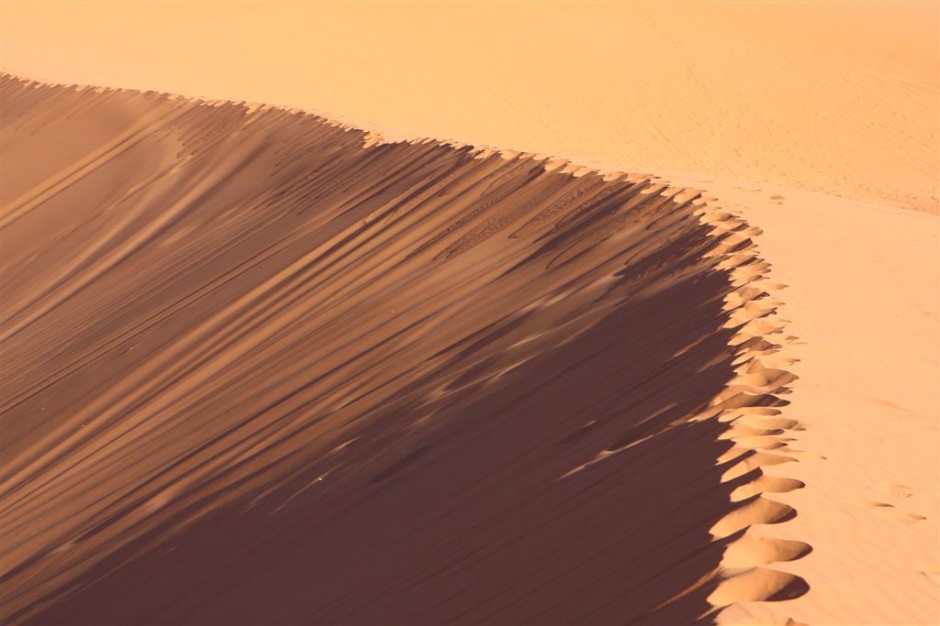Several participants in the Geoblogsphere having been posting recently about sand dunes. Its part of Sand Dune Week declared on twitter by Brian Romans. Some of the posts are listed by Matthew Francis or find more by searching on twitter for “sand dune week”.
There are three sessions at the European Geosciences Union General Assembly 2012 directly related to sand dunes, these are listed below. To submit an abstract visit the meeting website.
GM5.1 Aeolian Processes and Landforms
Convener: J.M. Nield, Co-Convener: J. King
Aeolian geomorphology covers a wide spectrum of research from the small scale study of processes in the field or laboratory to modelling projects predicting long-term dune field evolution. This session aims to bring together a diverse group of researchers that study wind-blown sediment (both sand and dust) and associated bedforms in a range of environments, from coastal and semi-arid regions, to hyper arid deserts. Contributions that use novel instrumentation in field studies, remote sensing at the landscape scale or innovative numerical modelling methods, are encouraged, particularly those which attempt to elucidate feedback between surface properties and sediment transport.
GM10.1/PS2.9 Planetary Geomorphology
Convener: S. Conway, Co-Conveners: M. Balme , C. Gallagher
This session aims to give a different perspective on planetary science by bringing together geomorphologists from terrestrial sciences with those who spend more time on other planets. Studies of landscapes on any scale on any solid body are welcome. We particularly encourage those who use Earth analogues (either in the field or laboratory) to present their work. Submissions can include studies on glacial, periglacial, aeolian, volcanic or fluvial landforms. We welcome submissions from geomorphologists who are new to planetary science.
AS4.13/CL4.7 Aeolian dust, initiator, player, and recorder of environmental change
Convener: P. Knippertz, Co-Convener: J.-B. Stuut
The interactions between aerosols, climate, and weather are among the large uncertainties of current climate and atmospheric research. Mineral dust is an important natural source of aerosol with significant implications on radiation, cloud microphysics, atmospheric chemistry and the carbon cycle via the fertilization of marine and terrestrial ecosystems.
In addition, properties of dust deposited in sediments and ice cores are important (paleo-)climate indicators.This interdivision session is open to contributions dealing with:
(1) measurements of all aspects of the dust cycle (emission, transport, deposition, size distribution, particle characteristics) with in situ and remote sensing techniques,
(2) numerical simulations of dust on global and regional scales,
(3) meteorological conditions for dust storms, dust transport and deposition,
(4) interactions of dust with clouds and radiation,
(5) influence of dust on atmospheric chemistry,
(6) fertilization of ecosystems through dust deposition,
(7) any study using dust as a (paleo-)climate indicator including investigations of Loess, ice cores, lake sediments, ocean sediments and dunes.We especially encourage our colleagues to submit papers on the integration of different disciplines and/or modeling of past, present and future climates.

